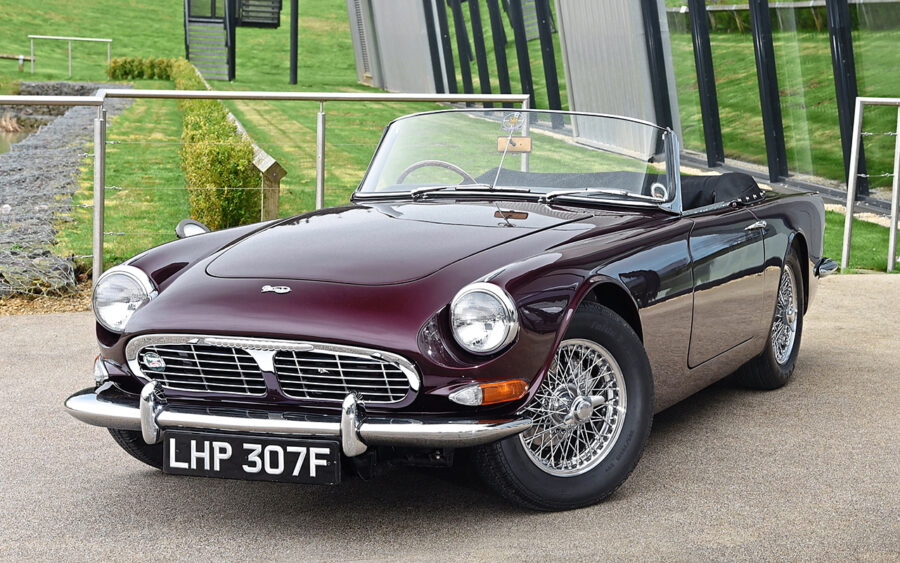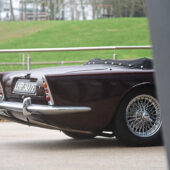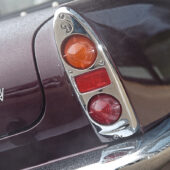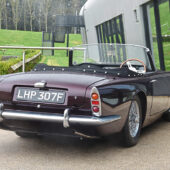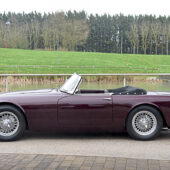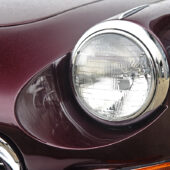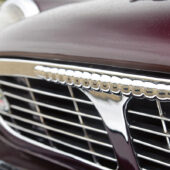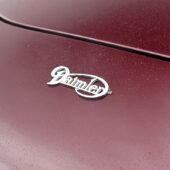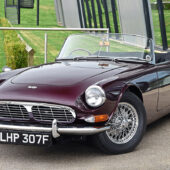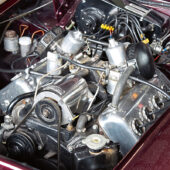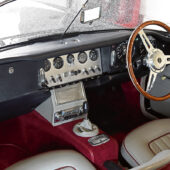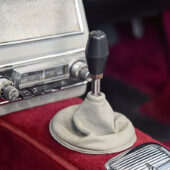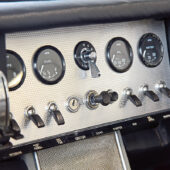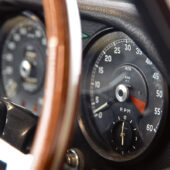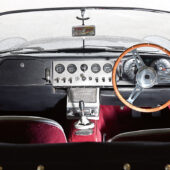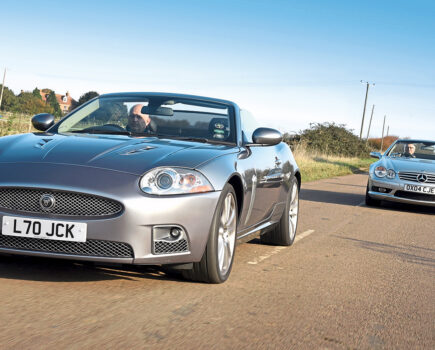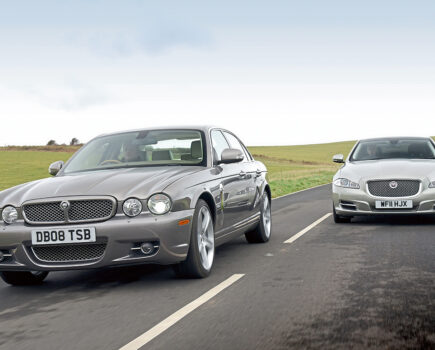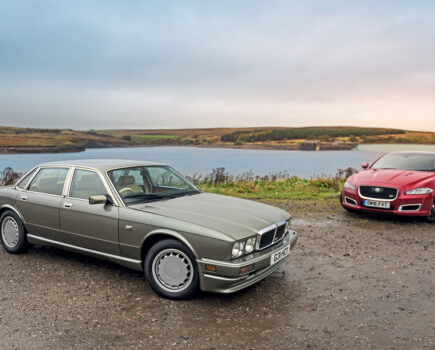When Jaguar bought Daimler in 1960 it inherited the SP250, but Sir William Lyons wasn’t impressed. His redesign was the ill-fated SP252
Words and images: Paul Walton With thanks to: Jaguar Daimler Heritage Trust
To say Jaguar’s management was unimpressed by the SP250 is an understatement. “When we bought Daimler, Sir William [Lyons] asked me to try an SP250 and give my opinion, which was basically, ‘Stop production tomorrow!’” wrote Jaguar’s then assistant manager, Lofty England, in a letter to author Brian Long for his book, Daimler SP250 V8. “Apart from being near overheating between Radford and Browns Lane, it had scuttle-shake and flexed longitudinally to the extent that the doors opened over rough ground.”
England wasn’t alone in his poor assessment. Ever since the car went on sale in 1959 people had been critical about its build quality, the result of Daimler’s lack of funds at the time, which had impacted on the SP250’s development and how it was built. A report by Jaguar’s engineers said that with a load applied by hand to the back end of the rear wing, the door opening could be closed or opened by approximately 5/16in [8mm]. There was also considerable movement of the top of the screen and the pillar could be moved by over 1in [25mm] by hand. The resin content of the glass-fibre was 75 percent, whereas Jaguar worked on 40 percent maximum. “This will, of course, have the effect of seriously weakening the fabric of the material,” read the report.
In a 1960 letter to Lyons, Jaguar’s North American importer Johannes Eerdmans wrote that cars were arriving in such a terrible condition that they required $50 to $80 to be spent on them to make them salesworthy, but even then, they weren’t selling. Of 366 cars received, only 61 had been sold by the end of June.
Then, there was its price. In 1960, the Daimler sold for £1,395, compared to £1,168 for the Austin-Healey 3000 and £991 for the Triumph TR3A. In America, the SP250 retailed for $3,842, barely undercutting the highly popular Chevrolet Corvette, which started at $3,872.
The car’s only saving grace was its compact 2.5-litre V8 designed by Edward Turner, managing director of BSA’s automotive division who had been responsible for some of Triumph’s most famous motorcycles, including the Speed Twin, Thunderbird and T120 Bonneville. Turner based the design of the V8’s cylinder head on those he had developed for Triumph motorcycles, including the use of hemispherical combustion chambers. Free-revving, lightweight and smooth, it made the SP250 a genuine performance car.
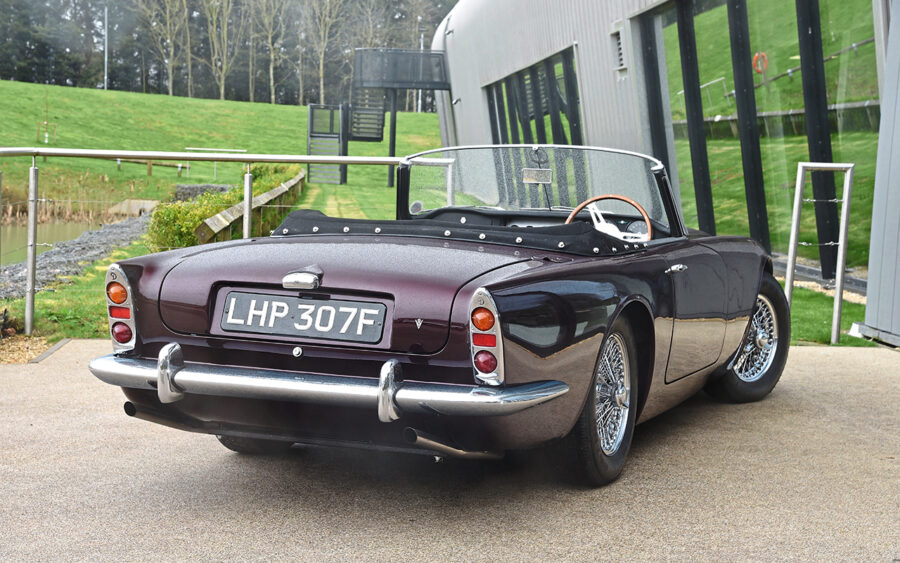
“The engine has a smoothness and freedom from mechanical clatter,” said Motor magazine in its 15 June 1960 issue. “It would be hard to find an engine that is more free from vibration, and running it with the bonnet open emphasises that it is a very quiet engine mechanically and not merely insulated with sound-absorbing material.” In America, Road & Track magazine tested the SP250 in early 1960 and called the performance “sensational,” on account of it accelerating to 60mph in a mere 9.1 seconds.
Almost immediately after buying Daimler, Jaguar’s Experimental Department investigated ways to improve the SP250. “Our first impression was that it wasn’t very pretty,” reported Trevor Crisp – then a Jaguar apprentice, but later drivetrain director – in Long’s book, “but our main concern was to cure the extremely unrefined chassis without spending much money on it.”
A three-piece hoop under the dashboard that connected through the A-posts to the sill beams strengthened the scuttle and helped steering column rigidity. Rear uprights (or B-posts) were added to give better strength between the rear outriggers and the body. New sill beams were bolted to the extended outriggers, and steel stiffeners were incorporated into the bodyshell for improved strength. “After we stiffened the chassis members and scuttle and sorted the running temperature it became a saleable product,” continues England’s letter.
The exact production start date of these updated SP250s – known as B-spec – isn’t clear because the modifications were made to existing cars, including 130 unsold examples that had been shipped back from the States.
For many, though, the SP250’s biggest downfall remained its looks. With a wide, prominent radiator grille and bulbous headlights it wasn’t as pretty as many of its contemporaries, including Jaguar’s own already successful E-type. So, between 1961 and 1963, Sir William Lyons, as Jaguar’s chief stylist, gave the car a serious facelift. He replaced the large grille with a smaller and more discreet opening while raising the height of the front wing and adding E-type-style headlight scoops. The sidelights were repositioned from above the headlights to below and replaced by the same style as the E-type’s. Sir William then removed the Daimler’s distinctive flared wheelarches and added new slimmer bumpers with E-type over-riders. He left the rear wings largely the same, including the dramatic fins. Fred Gardner, who was in charge of Jaguar’s prototype bodyshop, then built three bodies from glass-fibre at Browns Lane.
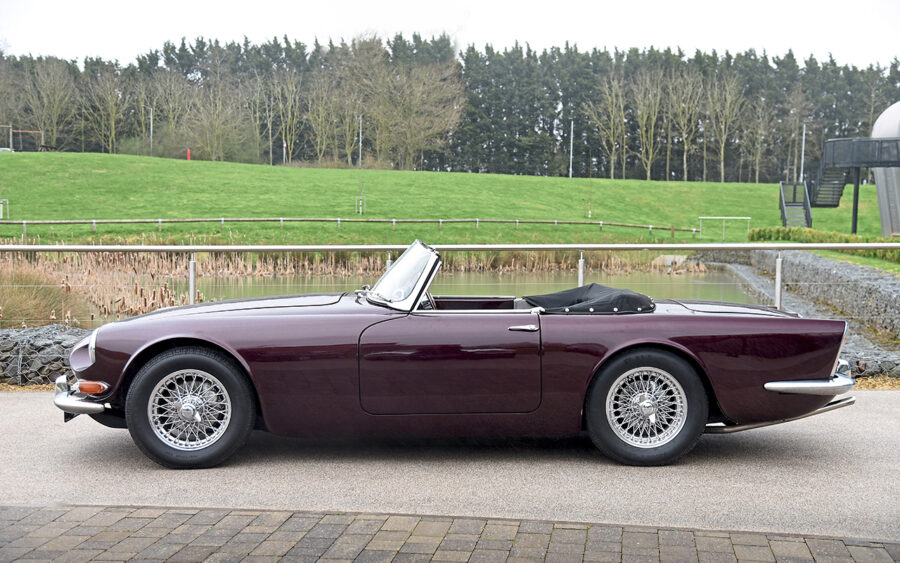
Jaguar allocated three unused prototype chassis numbers from the SP250’s original development for the project: 100003, 100004 and 100005. The first, a black car, was never registered. To improve handling, rack-and-pinion steering was fitted over the standard Daimler steering box and the E-type’s torsion bar front suspension. But, despite these improvements, the car was still said to be unstable. Chassis 004 is thought to have been used for Gardner’s original body. It, like the black 003, was dismantled and destroyed.
Chassis 005 was a fully finished example. Painted maroon with a grey interior, the car – like most other Jaguar prototypes – was transported to Sir William’s home at Wappenbury Hall so he could assess it in natural light. Lyons apparently liked the car – now called the SP252 – and asked for a viability study to be completed.
It was soon discovered that, due to the labour intensiveness of the glass-fibre body, the SP250 took two-and-a-half times longer to produce than the E-type. Consequently, the SP252 project was abandoned. Production of the SP250 finished in 1964, after just 2,654 had been made.
The maroon car was pushed into a corner of Browns Lane and forgotten about. That is until 1967, when it was spotted by Peter Ashworth, an entrepreneur in the entertainments industry and a regular Jaguar customer. Ashworth wanted it for his wife (who already owned a Daimler V8 saloon) and convinced Lofty England – by then managing director – to sell him the car; in September 1967, it was registered LHP 307F. However, Mrs Ashworth found the SP252’s steering heavy and the car was retuned to Browns Lane. In 1968, it was bought by Duncan Saunders, general secretary of the Daimler Lanchester Owners’ Club, who sold it later that year to Tom Sweet for £750.
Sweet kept this sole SP252 for 26 years, selling it in 1994 to Brian Peacock, who gave the car a thorough, nine-year restoration. As well as repairing the body and chassis, Peacock added a chrome radiator grille, which had been missing since the car was first sold to Ashworth in 1967, basing his recreation on period images of the car (thought to have been made from cardboard and silver paper), but adding some discreet Daimler flutes.
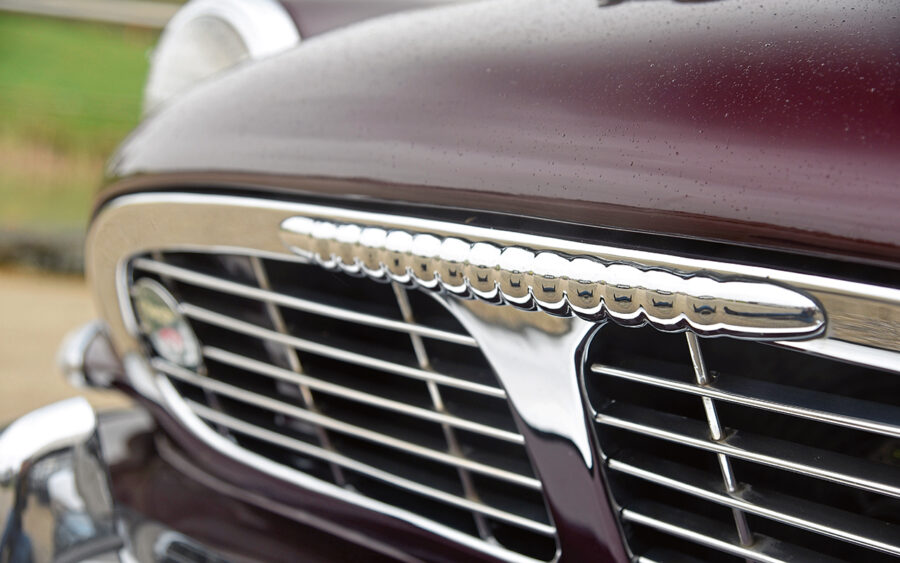
Several owners later, it is now in the hands of Matt and Claire Pilkington, who loaned the car to Jaguar Daimler Heritage Trust in March 2020 so that it could be displayed with its SP250 prototype (chassis 100002). It’s at the JDHT’s Collections Centre, at Gaydon, that I saw the SP252. The little Daimler makes a handsome car, looking like a blend of E-type, MGB and Sunbeam Alpine. With better proportions, cleaner lines and less fussy details, in my opinion its appearance over the original is greatly improved.
The SP252’s interior is pure early E-type, using the same speedo and rev counter, plus aluminium-finished central console. While the wood-rimmed steering wheel it currently uses is a later example, period images again show it with one of Jaguar’s.
Since it’s not a JDHT-owned car, a drive of the SP252 is out of the question, but, powered by the same 2.5-litre V8 as the SP250, I reckon the car’s performance will be just as good.
What a shame the Daimler SP252 never reached production. Fast and good-looking, it could have been a genuine rival to the E-type, both then and now, and Jaguar’s history could have played out a little differently. Considering the car’s mediocre origins, that was significant progress. Lofty England might not have thought the SP250 impressive, but its improvement certainly is.

